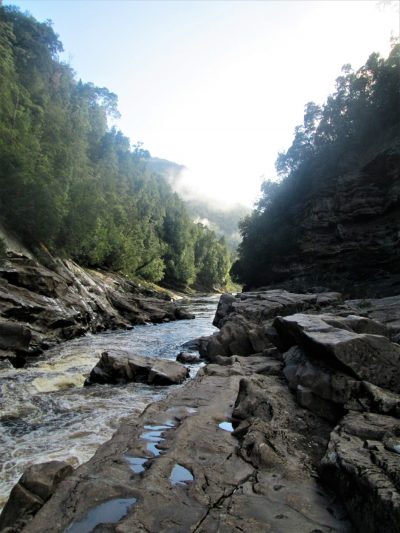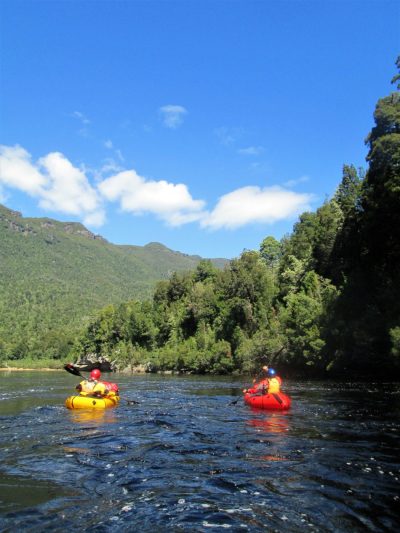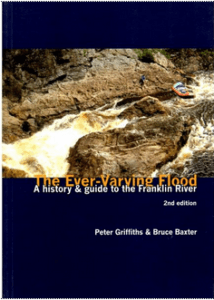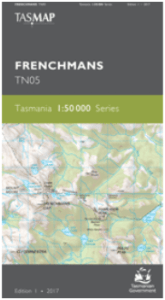Collingwood River to Sir John Falls
_____________________
Length: 72 miles/125 km, 6 to 10 days
Class: IV+ (V at High Water), many portages
Gradient: varies greatly, pool drop
Recommended Flows: 3 (very low) to 200 (too high) Cumes; 10 to 15 Cumes is ideal. This link gives the flow in ML/day, divide by 86.4 to get Cumes (cubic meters per second).
Season: December to March
Permits: self-register at Put-in, need to purchase a parks pass
Shuttle: 1.5 hours/ 88 km – try Evans Coaches; plus 1 day boat shuttle
Boat: Gordon River Cruises will pick you up at Heritage Landing adding 21 km of paddling. Most boaters prefer meeting West Coast Charters at Sir John Falls, the cost is about double and worth it. Here is a map.
Franklin River Overview
The Franklin River in Australia is one of the best known remote whitewater river rafting and kayaking expeditions in the world. Floating the coca-cola colored waters through the Tasmania Wilderness World Heritage Area is a scenic, grueling adventure.
The river can rise 20 feet in a night, there are wood hazards, big portages and hiking out would be a multi-day affair in the few spots there is a trail. While waiting for water to drop, camp has it’s own concerns: all three Tasmanian snakes are venomous, there are ticks, leeches, a couple venomous spiders and the stinging jack jumper ants!
While there is lots of weather, when the sun comes out the views are incredible. People like the strenuous hike to Frenchman’s Cap for amazing views when the weather cooperates. Local wildlife includes platypus, black racer snake, wallaby, and Tasmanian Devils. The Franklin/Gordon Wild Rivers National Park is also know for its thick Huron forests.
Be sure to buy the book Ever Varying Flood, it is the best resource to run the river. Also check out Lindsey’s Trip Report, this write-up on the river and these helpful GPS coordinates.
Map of Franklin River Trip
Shelter & Gear
While commercial trips sleep under tarps, we were much happier waking in our tent leech free. Our diehard mega-midding friends agreed that a tent is preferred. A drysuit was a must for the Franklin particularly in a self-bailing packraft. There were days in a row we never saw the sun. Since no fires are allowed it was best to stay warm and dry all the time. Finally, having a sticky soled pair of rafting/kayaking shoes is key with all the portaging on this trip.
Craft
Packrafts are the ideal craft for this trip. The ease of transporting them while traveling on airplanes, buses, cars, and portages alone makes them the ultimate boat for destination river trips. They are also able to carry an amazing amount of gear particularly when fitted with an airtight zipper. Most of our overnight gear was stored inside the boat, keeping the center of gravity low.
Between two of us on the Franklin, we comfortably carried 14 days worth of food, a tent, stove, fuel, a pot, sleeping bags and pads, extra warm clothing, repair and safety equipment. The boats performed well in the class IV whitewater and were convenient to pack and reinflate when portaging. The self-bailer with thigh straps is ideal for self-rescue for a less experienced paddler.
Those with kayaking experience may prefer the added warmth of a skirted packraft. However, we did end up not running a few rapids due to the limitations of our comfort in packrafts. Almost all the big rapids can be portaged the notable exception being the exit to Thunder Rush. It has a big class IV drop followed by what could be a pretty solid swim.
Franklin River Highlights
Put in where A10 crosses the Collingwood River. For the 6 kilometers on the Collingwood you’ll want to have low water creating very technical class III rapids. However at the confluence with the Franklin River having suffered through the low water will pay dividends in having the Franklin at a runnable flow. There is a nice campsite nestled between the confluence of the two rivers with a trail allowing for the last easy exit from the river. The Donaghy’s Hill Trail is also used to access the river and avoid running the Collingwood at low water.
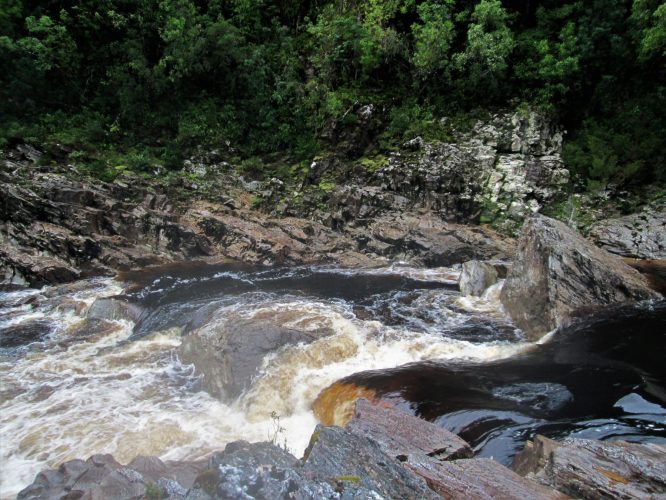
Upper Franklin River
Below the confluence keep an eye out for the log jam in Anaesthesia Ravine (III-IV). This easy river level portage is typically the first of many portages to come. There is also a nice protected camp in the ravine on river left at the Angle Rain Cavern. Not too far downstream of Anaesthesia is the next common portage, Nasty Notch (IV-V) which is typically portaged or ran on the right.
After Nasty Notch there are some fun splashy rapids in Descension Gorge (IV) and then the relaxing calm of Irenabyss. Below are nice campsites with trails on river right to a lookout and on river left to Frenchmans Cap.
Most of the portages in the gorges like the Great Ravine have trails that are well maintained and steep. Typically there is a high route and a low route for portaging. The rafters typically chose the low raft more often while packrafters and kayakers find the high route to be easy enough to be the preferred choice.
Video: Franklin River Rafting Descension Gorge
Middle Franklin
This section is much more relaxing with many camps and a few small rapid like Duck Shoot (III). Enjoy covering some miles along this calm scenic section as the Great Ravine is looming.
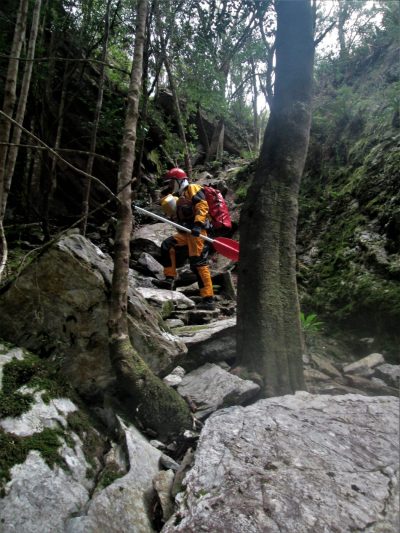
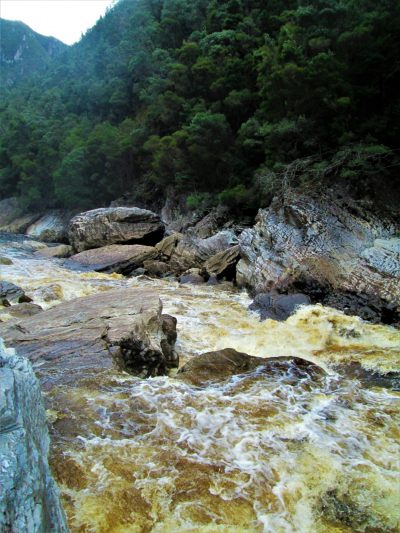
The Great Ravine
The small rapid Side Slip (II+) marks the end of the Middle Franklin and signals the Churn Rapid (IV-V) of the Great Ravine is just downstream. The Churn has a nice high portage trail on river left along with a potential camping spot. Next up is another nice (high or low) river left portage or big rapid at Coruscades (IV+) and the Faucet (IV+) (see the header photos). Thunder Rush (IV-V+) has a river left high portage for the very challenging entrance. However this leaves a must run sharp class IV+ drop followed by a boulder garden (read more about packrafting Thunder Rush in this blog trip report). There is supposed to be a sketchy high portage on river right. Below is a reprieve in the Sanctum before tackling the Cauldron (IV-V) which can also be portaged on river left.
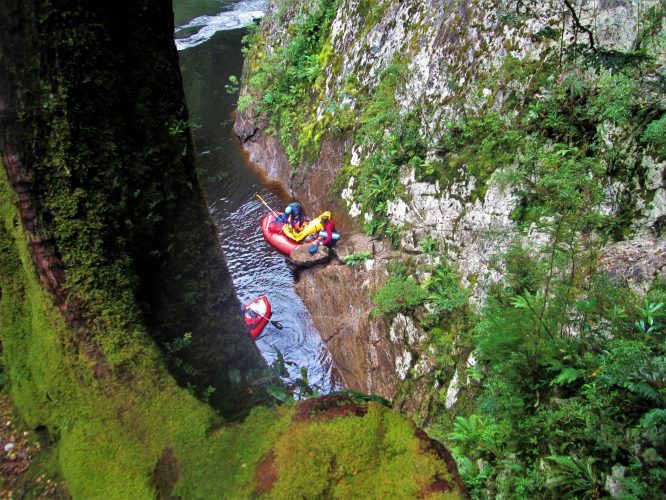
Lower Franklin River
After the Cauldron the river eases up and opens up a bit. Rafters Basin on river left is a huge camping area. A few bends downstream from there is river access via a 2.5 hour drive on the Mt. McCall four-wheel drive road to Queenstown.
Below the river access are a couple of rapids brings and then Pig Trough (V), an ugly looking drop that has a very easy looking low portage route. Below Pig Trough is a great place to relax with a waterfall a few minutes walk up the right bank, Rock Island Bend downstream and Pig Trough in view.
Newland Cascades is a fun multi-tier class IV rapid downstream. There is a nice campsite at the base of the rapid on river right with some natural rain protection.
A few miles further downstream is the Flat Island Campsite. This is start of the Eagle Creek track to hike to the Gordon River and shorten the paddle to Heritage Landing.
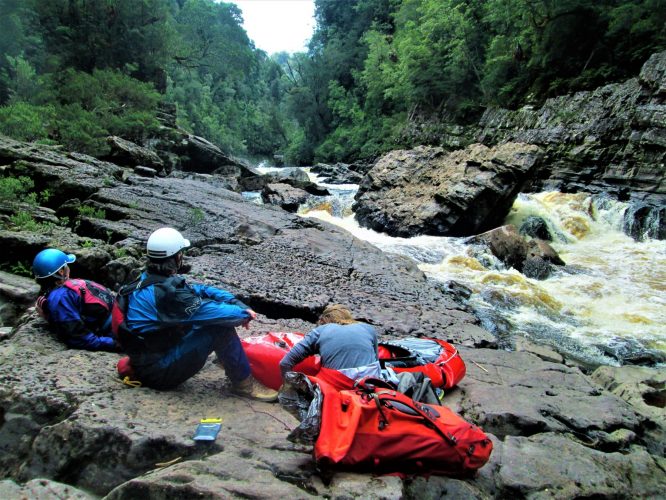
Confluence with the Gordon
Below the Newland Cascades the river opens up as the gradient slackens. High water at this point is preferential. Managed by the Aboriginal community, Kuti Kina cave is worth a stop. There are also a couple of fun rapids in this section but beware of Big Fall (IV-V) which is commonly portaged.
Below the confluence is more flat water paddling to Sir John Falls.
Getting back to Civilization
At the end of the trip the river opens up even more and the current is not noticable. The rumors about the strong upstream afternoon winds should not be underestimated. It’s worth spending the extra money to get picked up at Sir John’s Falls by West Coast Charters, make your reservation early as they have limited space.
Gordon River Cruises provides a luxury ferry from Heritage Landing (22 km farther downstream) which includes a fantastic all-you-can-eat lunch and a fascinating tour of one of the penal islands in the bay. You must be willing to paddle a full day of flatwater (assuming the wind cooperates, we had to wait until nightfall). While waiting out the wind we set up our tent to have a reprieve from the swarms of buzzing march flies.
Another adventurous option is the 10 km Eagle Creek Track from Flat Island to the confluence of Eagle Creek and the Gordon and then a short 5 km paddle to Heritage Landing.
There are hot public showers just down the street from the boat ramp in Strahan!


